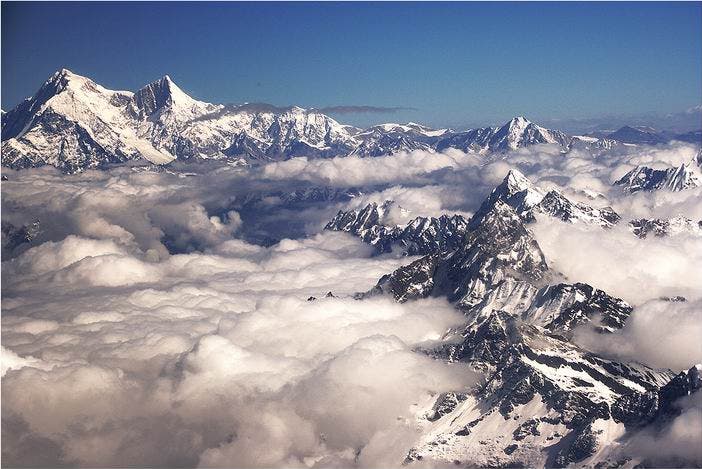When the Everest was first scaled in 1953, Edmund Hillary buried a few sweets and a cross in the summit snow — leaving behind a sign that mankind has reached the top. But mankind had been leaving signs in the Himalaya for far longer than that, they were just harder to see.
According to a new study, coal combustion from the Industrial Revolution can be detected in glaciers on one of the highest peaks in the Himalayas.

The Industrial Revolution was, above everything, an energy revolution. The technological and social changes that came with it were momentous, but it all hinged on the coal that would provide the energy.
Coal has much more energy per volume than wood, but burning coal is also more treacherous. In addition to carbon dioxide, coal releases a number of toxic metals, including cadmium, chromium, and zinc — metals that get picked up in the atmosphere and can be transported all around the world.
The new study analyzed drill cores from the Dasuopu glacier, which is located on Shishapangma, one of the world’s 14 tallest mountains. The cores were extracted in 1997 as part of a larger project, mostly to study atmospheric circulation and other environmental changes. As part of this study, ice cores were gathered from a height of 7,020 meters (23,031 feet). This is the highest-altitude site in the world where ice cores have been analyzed.
Ice cores are a bit like a time capsule: they keep a pristine record of atmospheric and environmental conditions. In this case, the team analyzed the cores, looking for 23 trace metals.

Like clockwork, when the Industrial Revolution started, the amount of metal traces started to increase.
“What happens is at that time, in addition to the Industrial Revolution, the human population exploded and expanded,” said Paolo Gabrielli, lead author of the study and a principal investigator and research scientist at The Ohio State University Byrd Polar and Climate Research Center and the School of Earth Sciences. “And so there was a greater need for agricultural fields — and, typically, the way they got new fields was to burn forests.”
It’s hard to tell how much of the contamination came from burning coal and how much came from forest fires — but given the good correlation with coal consumption, it’s very likely that at least some of this contamination comes from coal.
The effect was most intense from about 1810 to 1880, when winters were wetter than usual in Dasuopu. There was more water than normal, and the water absorbed ash from the burning of coal and trees, preserving it as it froze.
It’s important to note that although the contamination was easily detectable, it had not reached a level where it could affect the ecosystem — yet.
“The levels of metals we found were higher than what would exist naturally, but were not high enough to be acutely toxic or poisonous,” Gabrielli said. “However, in the future, bioaccumulation may concentrate metals from meltwater at dangerous toxic levels in the tissues of organisms that live in ecosystems below the glacier.”
It is remarkable that more than a century before Dasuopu was scaled, humans were already affecting the atmosphere. We can have a pretty good general idea of how human industrial activity affected the atmosphere on opposite sides of the globe.
Similar effects were noted in the glaciers in Peru — though there, the effect started even earlier, as a result of silver mining and smelting.
“What is emerging from our studies, both in Peru and in the Himalayas, is that the impact of humans started at different times in different parts of the planet,” Gabrielli said.
A recent study even documented the rise and fall of the Roman Empire and other European civilizations in the Greenland sheet.
This a good reminder that, even remotely, our activity is having an effect on every corner of the planet.
The study has been published in Proceedings of the National Academy of Sciences.









